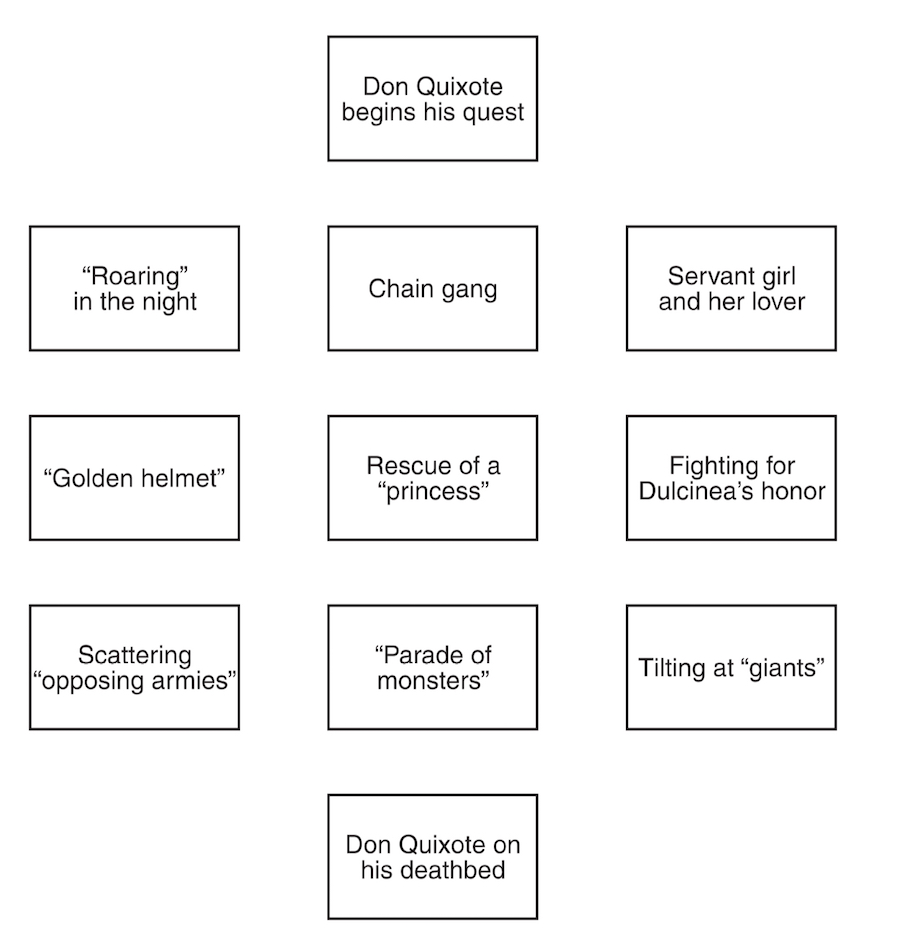Recently, I finished reading Character Development and Storytelling for Games by Lee Sheldon. The author has a long history of working both in the games industry, as well as in television and fiction — enabling him to draw directly form his own personal experience in a variety of mediums.
Sheldon’s book provides a significant amount of interesting detail about character creation (roles, traits, encounters, etc.) and the ways in which games differ from other storytelling mediums. He uses examples from a variety of sources, including classic literature, film, and television, as well as games, in order to provide evidence for the theories on storytelling, theme, and structure that he presents. He makes some interesting connections between these different mediums. However, sometimes his chapters are so heavy with references (many of which I’ve never heard of) that I sometimes found it somewhat overwhelming to process the lessons he is trying to impart.
My copy of the book was the first edition, published in 2004. While discussions of character and story are everlasting, when the book speaks about the future of games, it sometimes felt a bit out of date. Apparently, a second edition was published in 2013, which likely provides a more modern perspective and up-to-date cultural references.
Regardless, one section in particular presented me with a new way of thinking about story — namely, modular storytelling and how it can help blend gameplay and story into interactive narratives. And I was surprised to learn that classic literature could provide an early example of this kind of structure.
What Don Quixote Can Teach Us About Modular Stories
First published in the early 1600s, The Ingenious Gentleman Don Quixote of La Mancha by Spanish author Miguel de Cervantes is considered by many to be the first modern novel. The story satirizes chivalric romances (such as the stories of King Arthur’s knights), with the titular Don Quixote being a confused gentleman who rides out with his servant Sancho Panza (a simple farmer) in quest of adventures. His adventures, such as they are, involve Quixote believing he’s living some grand tale, while the truth is much more mundane — the most famous of which is the tale where he jousts against a windmill, which be believes to be a giant.
Sheldon presents Don Quixote, along with several other classical works, as providing the roots of the new storytelling forms that developers are using games today — most notably, modular storytelling.
Moving from the least amount of player control to the most player control, Sheldon looks at the various means of storytelling, beginning with linear narratives. These are the types of stories with which most people are familiar. Most books, movies, and shows are linear in nature, moving from point A to B to C. Many games also utilize this structure, and these games are often described as being on rails. A modern and well-loved example of this being The Last of Us.
The next level of interactivity involves branching narratives, in which players are able to make choices in order affect the outcome of the game. Despite the increased interactivity, Sheldon argues that branching narratives still depend on linear structure in order to function. As the player makes choices, the story still needs to maintain forward motion in order to maintain its logic.
In addition, many branching narratives operate under the illusion of choice in order to maintain control over the narrative. In this case, the player may make a selection from two or more opposing options. The player is thus able to make an impact on their experience of the story, but whatever they choose, each choice ultimately loops back to central story points, keeping the story on track. An excellent example of this is Telltale’s The Walking Dead, and you can view a map of how those choices play out and loop back on themselves at Venture Beat.
Which brings us finally to modular structures and how they can provide the most freedom to players. In a modular story, the player can move from one module to another in any order they choose — going from A to Z to G, or even G to Y to D. The order of specific events is irrelevant to the overall impact of the story.
In the case of Don Quixote, only the beginning (in which our hero begins his quest) and the ending (when he lies on his deathbed) are anchor points that cannot be changed. However, each of the adventures within the story, from fighting the windmill to rescuing the princess, can be read in any order. No matter how you scramble the various story modules, the impact and emotional resonance of the story remains the same.

Sheldon points out that modular storytelling pulls away from the concept of “paths” and moves toward non-linear thinking, providing what he believes to be an excellent method for integrating story and game play. “In many treasure hunt games like Jak & Daxter, the gameplay is already laid out in modules,” he writes. “You start the game in a large area with a number of locations to explore. There are boundaries at the edges of the area, but there are no rails. While the entire structure of the game may not be modular (there are choke points) players can move over a lot of territory in any direction they choose.”
Despite releasing control of the narrative the player’s whim, Sheldon points out that it’s possible to still maintain and produce compelling stories. One method of achieving this is to provide each of the modular story points with the same emotional intensity. Going back to Don Quixote as an example, each of the incidents that the hero experiences is provided with the same intensity. “Yet, by juxtaposing [these incidents] in a single day or story or game, then adding them up, something interesting happens,” notes Sheldon. “The resulting emotion is stronger than any one of the individual pieces.”
Individual modules can also be nested within each other to further enhance the gameplay experience. Sheldon explains, “The largest module can be the entire game world. Within that game world can be as many stories, characters, quests, encounters, puzzles, and so forth that our time, budget, energy, and brain capacity can support. And each of those can be made up of even smaller modules.”

It’s important to note that Sheldon doesn’t necessarily prefer any specific story structure over another. Variation in gameplay and storytelling has value — particularly, if linear, branching, and module structures can be blended together to create an optimal player experience.
Final Thoughts
While Character Development and Storytelling for Games presents a number of valuable lessons for game writers, the sections on module storytelling alone made this a book worth a reading. As I mentioned at the beginning, the second edition of the book is available, which likely provides more current insights into game writing.
Modular storytelling is a fascinating and valuable concept to absorb — and it is something that will take me some time to work my mind around. I’m looking forward to exploring it further and seeing how I might be able to use it the future to expand the way I approach storytelling.
(The top image of Don Quixote battling the windmill is from Wikimedia Commons.)
